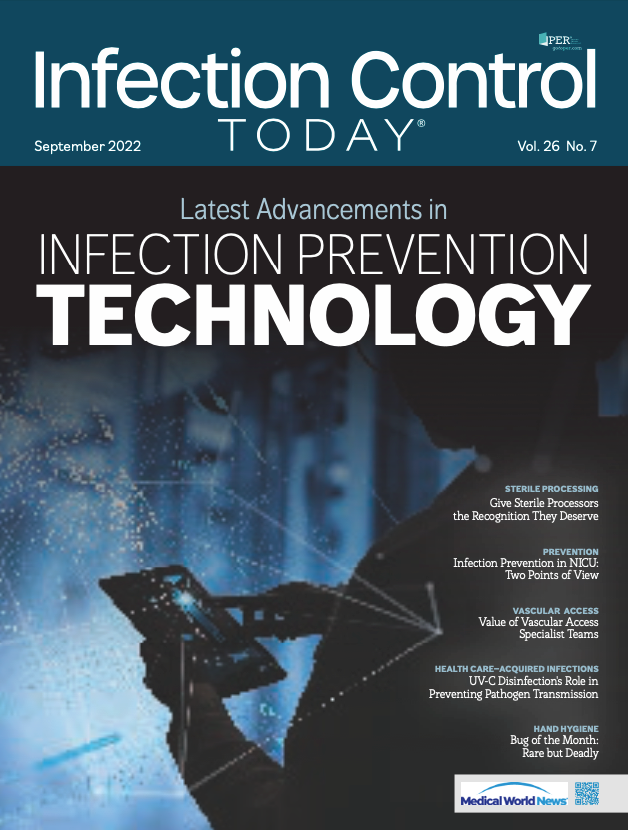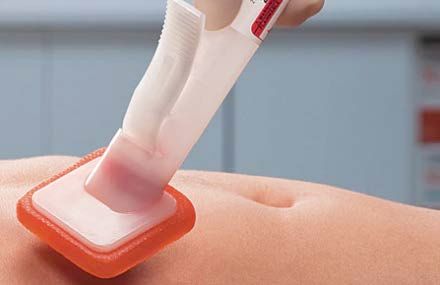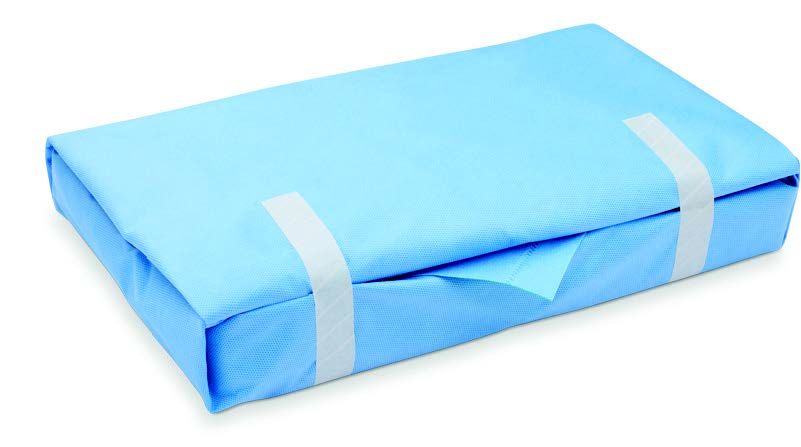Infection Control Today's® Product Locator for September 2022
Infection Control Today's® Product Locator is a monthly column highlighting some of the latest advanced technology in the infection prevention field.
To help improve the vital work of those infection preventionists, nurses, and physicians in the infection control field, Infection Control Today® searches for interesting, supportive, and innovative products. These are this month's picks.
ChloraPrep
ChloraPrep patient preoperative skin preparation is a tenacious, quick-acting, broad-spectrum antiseptic for a wide range of procedures. The ChloraPrep formulation is the only antiseptic formulation whose persistent antimicrobial power has been confirmed in more than 50 studies. For convenience and ease of use, it is available in 6 different applicators designed for various procedures ranging from peripheral IV insertion to major surgery. The active ingredients include chlorhexidine gluconate 2% weight by volume and isopropyl alcohol 70% volume per volume. Its FDA approval came in 2000.
Chlorhexidine gluconate is highly recommended by at least 18 organizations and initiatives, including the Centers for Disease Control and Prevention’s (CDC’s) 2002 Guidelines for the Prevention of Intravascular Catheter-Related Infections, with 11 specifically supporting a 2% formulation. The CDC guidelines state that before inserting a central venous catheter or peripheral arterial catheter, the skin should be cleaned with a greater than 0.5% chlorhexidine preparation with alcohol. This preparation is classified as a category 1A recommendation for cutaneous antisepsis, which is the highest recommendation from the CDC.
The patented ChloraPrep Scrub Teal and Hi-Lite Orange tint process adds color as the solution enters the sponge pad. The tint eases visualization of the prepped area compared with brown, iodine-based preps as the ChloraPrep Scrub Teal and Hi-Lite Orange are easier to see on different skin tones. The dyes in Scrub Teal and Hi-Lite Orange tints—Food, Drug and Cosmetic (FD&C) Green 3 and Yellow 6 dyes—have been “generally recognized as safe” (GRAS) by the FDA. Extensive safety tests are conducted, reviewed, and accepted to achieve the GRAS rating. FD&C Green 3 is not uncommon in the health care field and is found in eye angiography, screening for ocular dryness, dye injections, routine lab testing, and histological/cytological stains for cancer screening of tissues.
Aesculap Sterile Container Systems
Aesculap offers an extensive range of containers, baskets, and accessories to meet all your instrument sets and reprocessing requirements. Deliver the right instrument set to the right place on time with the Aesculap SterilContainer System.
With more than 10 Food and Drug Administration (FDA) clearances, Aesculap allows its customers to standardize with 1 brand of sterile containers. Using only 1-time sterile containers limits process variability, which can reduce costs and waste, simplify the documentation process, lessen employee stress from the operating room to sterile processing department because of increased efficiency, and lower the chance of errors, all of which leads to improved patient outcomes.
The Aesculap SterilContainer System comes in a wide range of container sizes and heights for all customers’ instrument sets’ requirements. The construction is lightweight aluminum that is 15% to 20% lighter than the leading competition, meeting the Association for the Advancement of Medical Instrumentation 25-pound weight recommendation.
Benefits of the SterilContainer System include a 90° stop handle that helps prevent finger injuries during handling, a single-motion latch design that secures the containers swiftly when time is key in the operating room and sterile processing departments, and a 1-step retention plate that has an audible click, so the customer knows the filter is in place, simplifying and improving processing time. Best of all, the Aesculap guarantees a 10+-year service life.
Key Surgical Sterilization Wrap
The sterilization wraps from Key Surgical save time and improve proficient wrap practices. Sterilization wrap comes in 26 sizes, strengths, and weights varying from 100 to 600.
The wrap is made of 2 sheets of nonwoven Spunbond/melt blown/spunbond (SMS) material bonded together, which gives high tensile strength and flexibility for a top-performing sterile barrier. The sterilization wrap also has a unique diamond pattern with contrasting colors of blue and green, which aids workers in the operating room who must inspect the wraps for pinholes or defects.
Each sheet of the sterilization wrap is double-layer–bonded SMS material, and resists tears, punctures, and rips. Ease of use facilitates wrapping instrument trays, devices, and other surgical items. It is validated for steam, EtO sterilization, gas plasma, and vaporized hydrogen peroxide sterilization efficacy. Key Surgical sterilization wrap supports sterilization and, thus, patients’ safety. The barrier wrap protects against microorganisms, including bacteria, viruses, and spores while allowing sterilization.

Robust infectious disease surveillance, including rapid subtyping of influenza A, is essential for early detection, containment, and public health reporting of novel viral threats.


